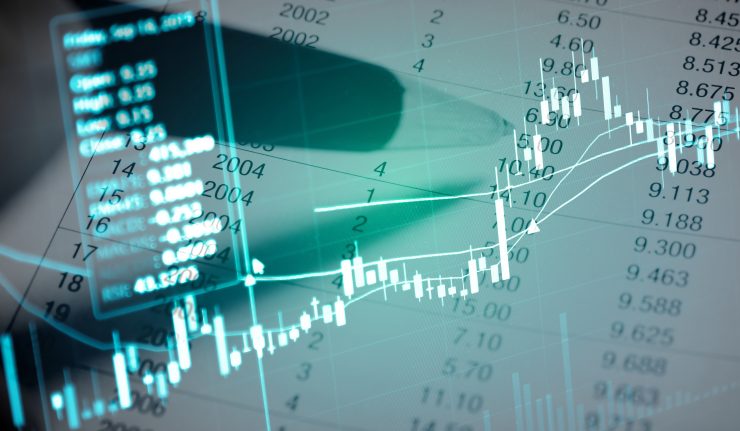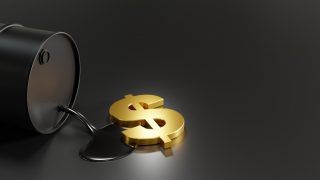Stocks and exchange-traded funds (ETFs) are securities (tradable financial assets), but the similarities end there. One is older than the founding of Jamestown. The other was invented after Adobe Photoshop. One is a single financial instrument. The other is composed of dozens, if not hundreds or thousands of underlying derivatives.
The two securities are primarily grounded in two very different investment philosophies. Stocks and stock picking involve actively analyzing and selecting companies that are expected to perform better in the future.
Meanwhile, investors in exchange-traded funds believe in tracking different market segments and striving for market-average returns.
Two very different investments, but which is better?
Exchange-Traded Funds (ETFs) vs. Stocks: A Pillar of the Global Economy
First introduced in 1602 by the Dutch East India Company to fund eastern trade route exploration, stocks have become a pillar of the global economy and investors’ portfolios. In exchange for providing individuals a piece, or “share,” of the business, stocks allow corporations to raise capital to fund their operations or expansion plans. Today, approximately 41,000 publicly traded companies are listed on stock exchanges globally, a combined market value over $80 trillion, with millions more traded over-the-counter (OTC).
Stocks, or shares, are a subset of derivatives. A derivative is a contract between two or more parties that derives its value from underlying assets. A share’s value is dependent on the underlying company’s financials (revenue, profits, total assets, etc.). Bonds, commodities, ETFs and currencies are also derivatives.
Exchange-Traded Funds (ETFs) vs. Stocks: Pros and Cons of Equity
The simplicity and accessibility of stock investing have made them a popular investment choice for individuals looking to plan for retirement, save for college or increase their spending money.
When an individual purchases stock, they become an equity holder of the business. Equity constitutes ownership of a company and its underlying assets. At its heart, a share signifies partial ownership of a company and a stake in its future profits and cash flow. Equity is calculated as the total assets of a company minus total liabilities. It represents the total value returned to shareholders if all assets were liquidated and debts paid off.
Since equity holders are the last to be paid during bankruptcy, stocks are considered riskier than debt investments like bonds. During chapter seven bankruptcy, company assets are liquidated to raise capital to pay various parties who hold a stake in the company. Typically, secured creditors are paid first, followed by unsecured creditors. Shareholders are paid last, if at all. However, stocks can provide higher returns.
A benefit of stock investing is that unlike partnerships or sole proprietorships, corporations have limited liability. Shareholders of a public company possess no risk beyond their stock investments. Creditors cannot seize an investor’s house or personal belongings if the company defaults.
Exchange-Traded Funds (ETFs) vs. Stocks: How to Go Public
When we discuss stocks, we are typically referencing shares of publicly traded companies. Retail investors cannot purchase the stock of privately held companies. A company becomes public by issuing shares to outside investors.
As investors, we often hear about initial public offerings (IPOs). As the name suggests, an IPO occurs when a company distributes shares to the public for the first time. During this process, investment banks usually underwrite the offering to minimize the company’s risk. A company will typically create new shares to issue to investors, diluting its earnings per share but allowing the corporation to raise more capital.
Once the Securities and Exchange Commission (SEC) approves the offering, shares of the company are sold first to institutional investors before being offered to the general public. The entire process typically takes six to nine months.
Companies can also go public through direct listings or special purpose acquisition companies (SPACs). A direct listing allows companies to issue stock directly to a stock exchange without underwriters. Direct listings prevent companies from creating new shares. SPACs are investment vehicles that IPO first, raising capital, before then acquiring an already existing business.
SPACs and direct listings have become more popular over the years as they are more streamlined and contain less SEC scrutiny. However, they prevent corporations from conducting secondary offerings.
Exchange-Traded Funds (ETFs) vs. Stocks: Seconds?
Once an IPO transpires, a company can also perform a secondary offering. Although less newsworthy and typically smaller, secondary offerings can occur multiple times and present significant implications for investors.
Secondary offerings, also known as follow-on offerings, undergo the same process as IPOs. The procedure is usually more streamlined since there is already a track record of success. However, there are two types of secondary offerings: non-dilutive and dilutive offerings.
During a non-dilutive offering, the number of outstanding shares remains the same. The company uses most of the proceeds from the offering to pay current investors for their shares. Stock is essentially redistributed to new investors. Non-dilutive offerings typically do not raise significant capital for the company and are usually conducted to diversify investor holdings.
Similar to IPOs, dilutive offerings create new shares, reducing earnings per share. The proceeds from selling new stock are used to finance long-term goals such as expanding operations or paying down debt. However, dilutive offerings can cause a drop in stock price, especially in the short term, as company profits are disseminated across more shares.
Individuals can use a variety of metrics to calculate share dilution or how accurately priced a company’s stock is relative to its revenue, profit or cash flow. Two of the most common metrics are the price-to-earnings (P/E) and earnings per share (EPS) ratios. The P/E ratio calculates the amount of profit a company generates relative to its share price. EPS represents a company’s profit per share. Metrics can vary from industry to industry as business models change. Investors in bank stock, for example, commonly use return on equity (ROE), return on assets (ROA) and price-to-book (P/B) ratios.
Exchange-Traded Funds (ETFs) vs. Stocks: How to Trade Shares
Once a company issues shares, there are two main options for investors looking to buy or sell stocks: over-the-counter or on exchanges. Exchanges such as the New York Stock Exchange (NYSE) or the NASDAQ are structured and centralized trading networks, making it easy for various derivatives to be bought or sold during the business day. Exchanges have strict regulations and filing requirements. Usually, only the shares of the largest and most well-known corporations such as Apple (NASDAQ: AAPL) or Target (NYSE:TGT) are found on exchanges.
All other public companies are traded over the counter (OTC). OTC trading is available at all hours, and is decentralized and conducted through a dealer. Since over-the-counter trading has fewer regulations and restrictions, it is open to more companies. OTC trading offers lower fees but is less formalized, making transactions more difficult.
Exchange-Traded Funds (ETFs) vs. Stocks: How to Earn a Profit from Stocks
There are three primary ways to profit through the stock market: short-selling, dividend payments and capital gains.
- By short-selling a stock, an investor is betting that the share price will fall. Short-selling involves borrowing shares from a lender, selling them on the stock market, re-purchasing them at a set date and returning them to the lender with interest. If a stock price has fallen far enough by the later date to cover the interest payment, the investor pockets the difference.
- An investor can receive returns from dividend payments. If a stock’s underlying company turns a profit, it can either reinvest the earnings into its operations or pay them out as dividends to investors. Established companies such as Coca-Cola (NYSE:KO) or Toyota (NYSE:TM) usually possess higher dividend yields. Learn about great dividend investments here.
- If the market value increases, an individual can also sell shares they own for a profit, known as capital gains.
In summary, stock shares are a subset of derivatives and a form of securities. A share of a stock represents partial ownership in a company’s assets, cash flow and earnings. Companies mainly go public through IPOs, direct listings or SPACs. If a company conducts an IPO, it can also conduct secondary stock offerings, which may or may not dilute shares. P/E and EPS ratios are two of the more common and universal financial metrics used by investors to determine if a share price is under or overpriced. Shares can be traded OTC or on exchanges. Investors can turn a profit through short-selling, dividend payments or capital gains.
Want to start stock investing? Learn about our top three cannabis stocks here.
Exchange-Traded Funds (ETFs) vs. Stocks: ETFs Have Become Popular
Introduced in 1993 as a subset of index funds, exchange-traded funds have become an increasingly popular option for investors looking to diversify their portfolios quickly and efficiently. Compared to other investment funds, ETFs’ liquid and cost-effective nature provide an enticing opportunity for many individuals. Today, there are approximately $7.74 trillion held across 7,602 different ETFs globally.
Exchange-traded funds are created from borrowed securities, likely from a pension fund, placed in a trust. The securities are then used to form creation units, typically between 10,000 and 600,000 securities. The underlying trust has little movement beyond administrative oversight and dividend payments to the various ETF shareholders. ETFs are constructed from tiny slivers of the different creation units. Finally, shares of the ETFs provided by the trust are then sold on the open market, similar to stock issued by a company.
Since the underlying securities of an ETF are held in trust, owning an ETF share does not correlate to the direct ownership of securities. Unless an individual amasses the thousands of ETF shares needed to match and cash out a creation unit for its underlying securities — usually only possible for institutional investors — an investor cannot redeem ETF shares for the underlying securities. Instead, an ETF share serves as a legal claim on the securities held in trust.
Exchange-Traded Funds (ETFs) vs. Stocks: ETFs Offer Real-Time Pricing
Uniquely, the shares of an ETF are liquid enough for intraday trading on exchanges or over-the-counter (OTC), something not available for most other investment fund shares. Intraday trading also allows for ETF shares to be shorted or purchased on margin. Any price misalignments between an ETF and its portfolio are quickly captured by arbitrage traders, which move the ETF share price back into sync with its underlying securities.
Traditionally, ETFs were designed to be passive investments. However, since being introduced in 2008, active ETFs have experienced a significant rise in popularity. The difference between the two lies in how the underlying securities are managed and the resulting expense ratio.
Passive ETFs are designed to track an index or a popular benchmark, such as the S&P 500, Dow Jones Industrial Average or a specific industry or sector. ETFs of this type do not seek to outperform the market or its benchmark and are great for individuals looking to invest in a particular industry, sector or index. The ETF automatically adds or drops securities from its portfolio to match the index or benchmark they are assigned to emulate. As a result, passive ETFs do not offer the same professional guidance or support as other funds but charge lower fees. The average passive ETF expense ratio is 0.13%, meaning that for every $100 under management, 13 cents is paid to the fund manager.
Exchange-Traded Funds (ETFs) vs. Stocks: Active ETFs Differ from Index ETFs
Active ETFs attempt to beat the market through a team of analysts who continuously monitor the markets to select securities for the portfolio. ETFs of this type will typically have a particular index or benchmark they will track loosely. However, the fund manager will have the authority to deviate from the index or benchmark. An active ETF provides consistent professional oversight and securities analysis but also charges higher fees than passive ETFs. The average expense ratio of an active ETF stands at 0.66%. Outside of the fees and securities selection process, active and passive ETFs’ underlying structure and characteristics remain the same.
Most exchange-traded funds set investment parameters beyond just the industry or sector they follow. The three most common parameters are asset class (equity, bond, commodity, currency, etc.), style (value, growth and blend) and company size (mega-cap, large-cap, mid-cap, small-cap, etc.). These three classifications allow investors to better sort various ETFs by different risk profiles and potential return rates. Learn more about the various asset classes, styles and market cap classifications here.
Of course, there are drawbacks to every financial instrument. Intraday trading can be a double-edged sword for investors as short-term speculation on ETF shares can raise commissions and trading costs. Leveraged ETFs, which use debt to multiply returns, can also bring about losses greater than the value of the initial investment. Learn more about leveraged ETFs here.
One of the more common issues in ETFs for investors is the inconsistencies they bring regarding diversification. Many ETFs track indexes or benchmarks with narrow specifications, such as large-cap communications stocks, reducing portfolio diversification and increasing risk.
Like any investment fund, an individual needs to understand the parameters of a potential ETF investment. How narrow are its investment parameters? Is it leveraged?
Exchange-Traded Funds (ETFs) vs. Stocks: How ETFs Produce Returns
In the end, what matters most for investors is how they can earn returns. There are three primary ways retail ETF investors can earn a profit: dividend payments, capital gains and an increased market value.
- Dividend payments arise from the income generated by interest and dividend payments from the various bonds or stocks held in the ETF portfolio. ETFs hold onto all dividends received from their underlying securities before paying them in full at the end of each quarter on a pro-rata basis.
- If the ETF sells an underlying security at a profit, the fund achieves a capital gain. At the end of the year, the ETF will distribute all capital gains it has collected minus any capital losses to investors.
- Investors can sell their ETF shares at a profit during intraday trading if the underlying securities in the trust increase in market value.
In short, exchange-traded funds are great investments for individuals looking for a cheap and efficient way to diversify their portfolios quickly. ETFs are backed by an underlying set of securities held in a trust and can be actively or passively managed. Passive ETFs look to capture a particular index or benchmark as closely as possible and do not seek to outperform the market.
Active ETFs treat their index or benchmark as a rough guideline and look to beat the market by selectively choosing and picking securities. Unlike most other investment funds, ETFs are liquid enough to be traded intraday on exchanges or OTC, allowing shares to be shorted or bought on margin.
For a more comprehensive overview of ETFs, click here.
Exchange-Traded Funds (ETFs) vs. Stocks: When Are Stocks the Best?
Stock picking is preferred for industries or sectors with a wide dispersion of returns. Financial analysis can be used to identify mispriced companies, leading to higher returns than ETFs with similar indexes or benchmarks.
Stock picking can also be better for industries or sectors with securities that pay high dividends. Since ETFs are trusts, they are required by law to accumulate dividends until the end of each quarter before paying them out. Individual investors, however, have the flexibility to reinvest dividends immediately.
Directly owning shares allows investors to vote during shareholder meetings. However, this will likely only be a significant factor for individuals with substantial stock holdings in a company.
Finally, stock picking is generally a better choice if an investor saves for retirement through a defined contribution plan like a 401(k) or 403(b). ETFs are generally unavailable for such programs, a major advantage for stocks.
Exchange-Traded Funds (ETFs) vs. Stocks: When are ETFs the Best?
Exchange-traded funds are great for individuals seeking low-maintenance investments. Since most ETFs are diverse holdings from different asset classes and sectors, purchasing ETF shares alone can still result in a solid and diversified portfolio.
ETFs are for individuals seeking lower-risk investments. Purchasing a single ETF share means owning a slice of an underlying trust that contains hundreds if not thousands of securities. Bundling various securities together reduces risk and volatility. An industrial stock can drop 15% overnight, while the sector as a whole might barely drop 3%, if at all.
Finally, ETFs are better for investors seeking active professional portfolio management. Active ETFs have become more and more popular since being introduced in 2008 and offer professional portfolio management in much the way mutual funds do. Learn more about the differences between mutual funds and active ETFs here.
Exchange-Traded Funds (ETFs) vs. Stocks: The Winner
Ultimately, the question that investors want to know is, which securities are better, stocks or exchange-traded funds? There is no one correct answer. I recommend a healthy mix of stocks, bonds, ETFs and other securities. If I had to choose, passive ETFs come out on top for most investors.
Although it may be tempting for individuals to get hands-on with investing and personally choose the securities for an individual’s portfolio, it is very challenging for investors to outperform the market. A 2021 survey in early spring found that over a month, the average retail investor underperformed the S&P 500 by 11%.
The data is even worse for individuals looking to start day trading. 80% of day traders lose money over a year. The median loss day trading was an astounding -36.30%. It is simply much better for most individuals to invest for the long-term with ETFs.
Active ETFs’ continuous and in-depth professional securities analysis and fund management services may seem attractive for many investors, but passive ETFs still reign supreme. Even professional investors with teams of analysts consistently underperform the market. A recent 2020 report found that over 15 years, nearly 90% of active investment funds underperform the market. Add on the higher fees charged by active funds, and investors, on average, earn better returns by simply tracking indexes and benchmarks through passive funds.




